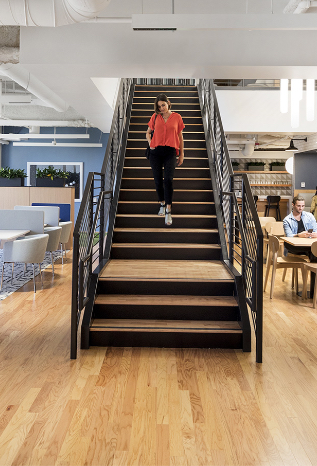Pre-pandemic, many employers were reluctant to let their employees work from home, for fear that they’d be less productive. However, it’s now been shown that the opposite is true, with research highlighting that flexible working is responsible for increasing employee productivity by 81%. But why is this the case? Let’s take a look.
How does flexible working improve productivity?
The Gartner 2021 Digital Worker Experience Survey found that 43% of respondents said that flexibility in their working hours helped them to achieve greater productivity, and 30% of respondents stated that the lack of commute when working from home enabled them to be more productive.
Although everyone prefers a different environment, as evident in the figures above, flexible working suits many people as it allows them to work hours that suit their life. Whether that’s starting late to fit in the school drop-off, taking a couple of hours out in the afternoon to care for a relative, or enjoying a long lunch break to fit in a workout, flexible working allows employees to fit work around their lives rather than vice versa.
Many employees have also benefitted from not commuting or having a shorter commute during the pandemic. A 2021 study titled ‘Commuting and Innovation: Are Closer Inventors More Productive?’ looked at the impact of commuting on the productivity of inventors in New England California, finding that for every 10 kilometres of distance travelled to work, firms registered 5% fewer patents. The trip to work also had an impact on the quality of work produced, with a 7% reduction for every 10 kilometres travelled.
It sounds like working from home is a win for employee productivity. Well, that’s not quite the full picture. The Gartner study also found that 27% of employees said that although they were more productive, it was because they worked longer hours from home. Additionally, 26% said that their productivity actually fell when they worked from home rather than in an office environment.
That’s why flexible working is so important, giving employees the autonomy to choose what works for them.
Is flexible working becoming the norm?
With Covid-19 restrictions still in place to some degree, many employers are still figuring out what the future looks like for their workplace. In one study, 63% of employers surveyed said that they had plans to introduce or expand the use of hybrid working, and 48% planned to expand their use of flexi-time enabling employees to choose when they start and finish work.
Another report by Flex Appeal found that 72% of employees want to continue working from home when all restrictions end; 70% want to keep working flexibly, and 64% want to keep part-time hours.
It seems for both employees and employers, then, that there’s the desire to continue working flexibly, in whatever form that might take.
Benefits of flexible working
As well as potentially increased productivity, there are numerous other flexible working benefits for both employees and employers. Let’s break them down.
Benefits of flexible working for employers
If you’re looking to grow your business, either now or in the future, then you’ll have a far better chance of attracting talent if you offer flexible working arrangements. In fact, 87% of people state that they want to work flexibly, but only 11% of jobs are advertised as flexible – so if you can offer this for your staff, you’ll already be ahead of the game. The number of people wanting to work flexibly rises even more when you look at a younger demographic, with 92% of young people stating this to be their preference – so if you want to build a future talent pipeline, a flexible model is the way to go.
Flexible working is also important as it can :
- Reduce absence rates for employers – by allowing employees to manage health conditions
- Workers more likely to be engaged – this can generate 43% more revenue for employers
What is a hybrid working model?
Hybrid working is a form of flexible working that allows employees to split their time between working from the office and working remotely, whether at home or another location.
All staff have the right to request flexible working, as set out by the government in their guidance around contracts and working hours. Employees have always been able to ask to work part of their time from home and part in the office, but now, many workplaces are moving towards this as the default method of working for all employees.
This is the perfect solution for many businesses, where full-time working from home isn’t feasible as there needs to be some element of face-to-face contact between staff. It still allows employees to choose their working hours and how many days they spend at home or in the office, and it’s better than a blanket rule where everyone must work from home or the office – neither of which suit the majority of people.
Establishing a hybrid work environment
A hybrid work from home and office model can be challenging to set up to establish a good office culture whilst people are spread across different locations. To make it a success when switching to this format, consider following these tips:
- Get your leadership team together to discuss the requirements before presenting them to staff
- Create a clear policy so staff understand where and when they should work
- Ask for feedback from your employees on the policy – for hybrid working to be a success, everyone has to be behind it
- Consider an office move. Could you downsize to a coworking space or a smaller office?
- Review your tech – if some staff are working from home, they need to fully participate in meetings via technology.
- Review your benefits package: do home workers get the same benefits as in-office staff? Whether they’re in the office every day or mostly working from home, everyone should have access to the same perks.
Ready to move to a hybrid working model and want to reevaluate your office space? From London to Edinburgh and everywhere in between, Easy Offices has offices and co-working spaces to suit your needs. Get in touch with us today to find out more.

